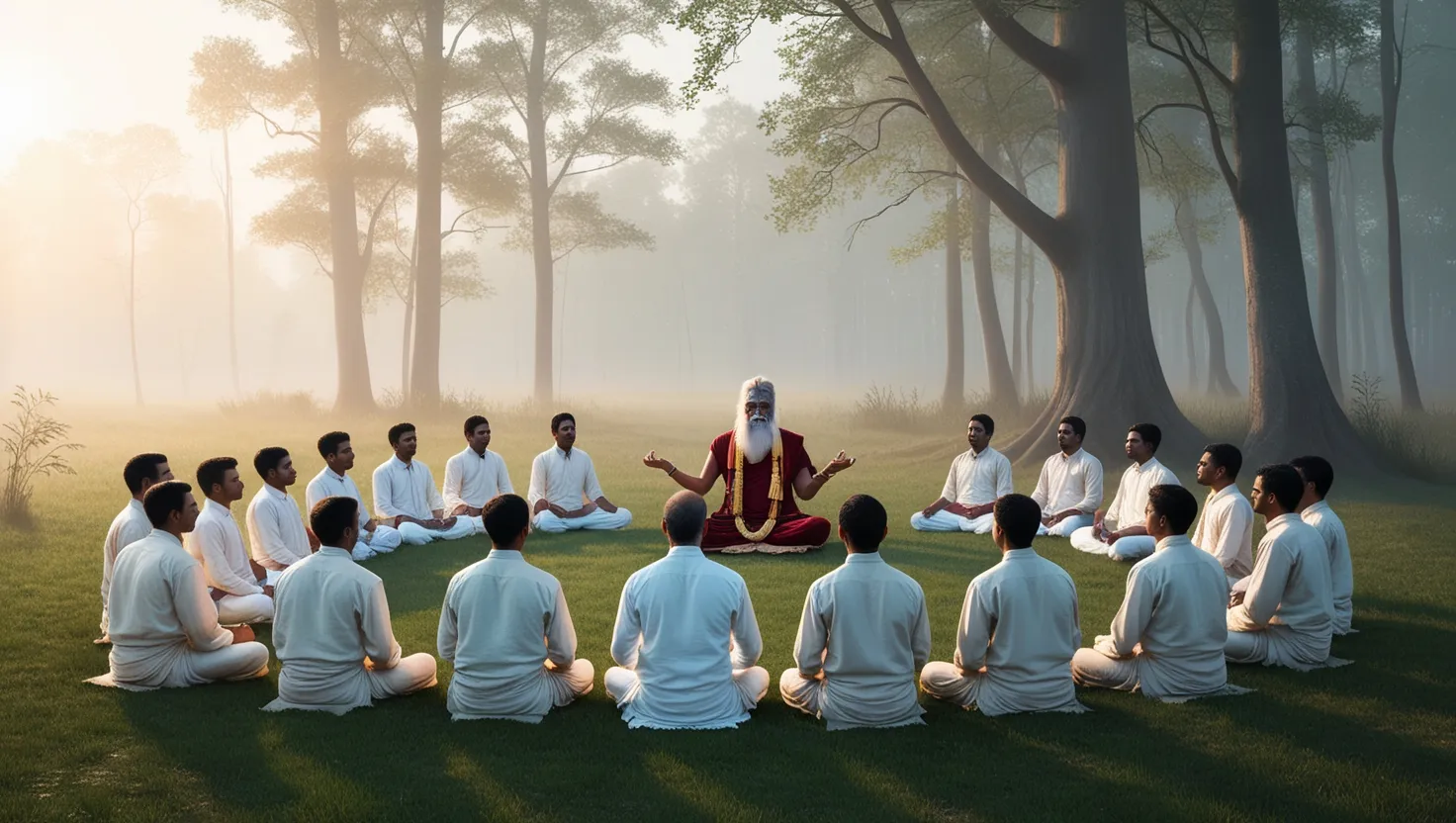Sadhana—this soulful term speaks volumes about a spiritual journey, marking the footsteps we take in our quest for personal transformation and growth. Imagine setting out every day, not just to go about your usual routine, but to connect deeper within, aligning yourself more closely with your higher self and the universe at large. It’s like having a daily rendezvous with peace and clarity.
The heart of sadhana lies in creating a habitual flow, something that nurtures your spiritual wellness every single day. Whether it’s yoga, meditation, chanting, or just spending some reflective quiet time, the goal is to forge a strong bond with your inner world and higher consciousness. The beauty of this practice is its universal appeal—it doesn’t confine itself to a particular religion. Instead, it opens its arms to anyone looking for personal growth and transformation.
Now, let’s talk about consistency, the sturdy backbone of sadhana. This isn’t about dedicating endless hours each day. It’s more about committing to something every day, even if it’s just a short, sweet, 15-minute affair. By making it a non-negotiable part of the day, discipline blooms naturally, and life’s challenges suddenly seem less daunting. Discipline and willpower crafted through sadhana naturally flow into increased efficiency, patience, and a sense of contentment that spills over into other areas of life.
Choosing when to practice sadhana is like picking the right time to enjoy a quiet sunrise. Traditionally, the magical hours—just two and a half hours before the world wakes—are favored. These ‘ambrosial hours’ have this peaceful energy, perfect for a moment of meditation and introspection. But hey, if getting up that early feels like a herculean task, any other quiet time during the day works just as well.
Preparation for sadhana goes beyond stretching a bit. It’s about setting up a sanctuary that resonates with your soul. Picture a corner of your home infused with things that inspire you—maybe some flowers, crystals, or your favorite images. Wearing natural, comfortable clothing and perhaps a head covering can add to the peaceful vibe, getting both body and mind ready. A bracing cold shower is a classic prep, cleansing and invigorating you for the journey inward.
Crafting a sadhana routine can be as unique as a personal signature. Here’s a peek into how it might go down:
Start with waking up early while the world is still rubbing sleep from its eyes. After a refreshing cold shower, slip into some comfy clothes and step into your sacred space. Light stretching and breathing get your rhythms tuned, preparing you for meditation and chanting. This might include sacred mantras or personal affirmations. Launch into a yoga practice to get the energy moving—Kundalini yoga works wonders here. Deep relaxation follows, letting everything settle. End with time for mantras or perhaps some introspective contemplation.
Sadhana isn’t only a solo adventure. Sharing this space in a group comes packed with its own magic. When individual energies harmonize into a collective flow, it creates a vibrant melody of unity and connection. Everyone genuinely becomes aligned, fostering greater understanding and less friction in daily life encounters.
Staying committed to this path requires more than just a casual nod to routine—it’s about making a firm commitment despite all the distractions that may stand in its way. Starting small and scaling up as time goes by is often the best approach. Keep your reasons for embarking on this journey close to your heart, a source of motivation that fuels your practice with each passing day.
Embarking on this journey also means rewiring some of those habitual patterns etched over time. It’s about embracing new habits and shedding the old ones, fostering a significant transformation. Specific practices like the 40/90/120/1000 day sadhanas offer a structured path for this change, helping to lift and replace outdated thoughts and behaviors with fresher, more harmonious ones.
Creating a sacred space for your practice is as essential as the practice itself. This special corner, reflective of your spiritual journey, should be peaceful and free of distractions. Sprucing it up with elements that speak to your soul makes it even more special. Whether at home or on the move, keeping this space sacred makes the daily connection with your inner self feel welcomed and uninterrupted.
Guidance in this journey can play a pivotal role. Finding a mentor or a teacher can make all the difference. While classes and workshops help reinforce understanding, having an experienced individual to guide you makes the path easier and more enriching. Choosing someone whose teachings resonate with your personal journey is crucial to ensure the environment remains supportive and nurturing.
At the end of the day, sadhana is deeply personal—it’s a journey of self-discovered joy and transformation. It’s not about external validation but about aligning more closely with one’s destiny, expanding one’s aura, and creating a vibe that others can perceive. It’s about fine-tuning systems within—nervous, glandular, and more—to prepare oneself to face the day with purpose and clarity.
Incorporating sadhana into daily life isn’t about complexity or dogma; it’s about simple devotion that brings about immense rewards. Whether done solo or with others, it’s a powerful tool for aligning oneself with the divine, opening doors to a life fulfilled with purpose and connection. As the journey unfolds, it brings clarity, inner peace, and profound personal transformation, guiding one gently but firmly toward their life’s purpose.






